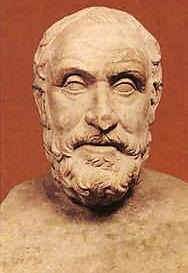
I was skeptical when the well-dressed drug salesmen told us in the 1990’s the new long acting narcotics (Oxycontin) wouldn’t lead to addiction. I remembered the processes taught to me long ago in medical school how our bodies change the number of neuro-receptors we have, so we can develop tolerance to drugs over time. Our bodies understand just how important the sensation of pain is to our survival.
As a physician skeptic, I rarely prescribe the new drugs as they first come out. Call me conservative.
I was also skeptical when I started reading about the new narcotics developed to treat narcotic addiction.
Maybe it was because I knew the history of humans and narcotics. Opium extracted from poppies has been used from ancient times. The dark paste could be smoked or eaten. It offered some benefits but addiction was a problem for many. Hundreds of years ago it was discovered that a mild acid extraction of raw opium produced morphine. This new drug was used for pain, but also to treat opium addicts.
Then, after the Civil War, a stronger acid extraction of morphine produced heroin. Many horribly wounded veterans had become addicted to morphine, and heroin was at first considered a treatment for this addiction. Heroin was effective for acute pain, but its faster action produced a euphoria, and addiction again became an even greater issue.
Methadone was another new narcotic 40 years ago developed specifically to deal with heroin addiction. It has migrated to be used for chronic pain, but it has a very narrow window of pain relief before it suppresses the drive to breathe; fatal overdose is a significant threat. Federally licensed methadone treatment programs are available for patients with narcotic addiction, but patients may be required to come in every day and be observed taking their dose. It makes holding a job or travel a real problem. And there are only a few treatment centers in Idaho and they are in urban areas.
So, when another “new” narcotic drug was suggested for the treatment of opioid addiction I was skeptical. But I read the studies and the reports.
This new synthetic narcotic buprenorphine, binds to the narcotic receptors on our nerve cells very strongly, but it doesn’t fully stimulate the nerves. It is effective at reducing cravings but doesn’t produce a “high” feeling. It has been used in Europe for 20 years, but only for a decade here in the US.
I understand the Drug Enforcement Agency being reluctant to authorize the use of another narcotic to treat narcotic addiction. I’ve just described for you the tawdry history of such attempts. So, the DEA requires any physician prescribing this drug to get extra training and limits the number of patients they can treat.
I had little reason to prescribe this drug until recently. Now I work in a clinic with a program for the treatment of patients with substance abuse disorders. My skepticism is being challenged daily.
I took the extra training and got the DEA certification. I learned the pharmacology of the drug, its side effects and drawbacks. It is no miracle drug, but for some folks it can provide a real benefit. And that’s the goal, isn’t it? Get people healthy.
Patients must see a counsellor as part of our program. We test urine specimens for any illicit substances. We call patients in to count their pills to make sure they aren’t selling them. And believe me, there is a market for these pills too. Almost every patient we have enrolled on our program admits they have tried the drug “from a friend”.
In our program I’ve seen patients who haven’t used illicit drugs for years now, on a low maintenance dose. They are in stable relationships, working regular jobs. Most expect to be off the medicine someday.
I hope so too.
Many physicians I have spoken with are very skeptical about the value of such treatment. I know their skepticism. I wonder why they weren’t so skeptical when the fancy suit drug salesman came knocking with Oxycontin coffee cups 25 years ago.
